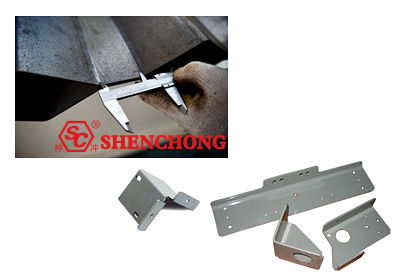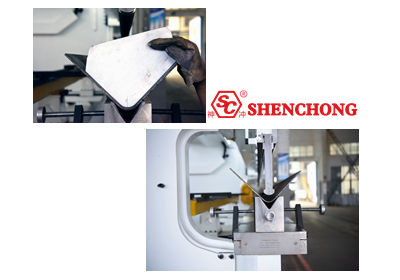
The deformation of the workpiece in sheet metal forming is a relatively difficult problem to solve. First, the cause of the deformation must be analyzed, and then countermeasures can be taken.

The material and structure will affect the deformation of the workpiece.
The amount of deformation is directly proportional to the complexity of shape, length width ratio and wall thickness, and directly proportional to the rigidity and stability of material.
Therefore, when designing parts, the influence of these factors on workpiece deformation should be reduced as much as possible.
Especially in the structure of large parts, the structure should be reasonable. Before sheet metal forming, the hardness, looseness and other defects of the blank should also be strictly controlled to ensure the quality of the blank and reduce the deformation of the workpiece.

The workpiece is also easy to deform during clamping. When clamping the workpiece, first select the correct clamping point. Then select the appropriate clamping force according to the position of the clamping point.
Therefore, make the clamping point consistent with the support point as far as possible, so that the clamping force acts on the support. The clamping point shall be as close to the machining surface as possible, and the position where the force is not easy to cause clamping deformation shall be selected.
When there are several directions of clamping force acting on the workpiece, the sequence of the clamping force should be considered. For the workpiece to contact the support, the clamping force should be applied first, and it should not be too large. For the main clamping force to balance the cutting force, it should act last.
Secondly, it is necessary to increase the contact area between the workpiece and the fixture or use the axial clamping force. Increasing the rigidity of the part is an effective way to solve the clamping deformation. However, due to the characteristics of the shape and structure of thin-walled parts, they have low rigidity. In this way, under the action of clamping force, deformation will occur.
Increasing the contact area between workpiece and fixture can effectively reduce the deformation of workpiece during clamping.
For example:
- When milling thin-walled parts, elastic pressing plates are widely used. The purpose is to increase the stress area of the contact parts.
- When turning the inner diameter and outer circle of the thin-walled sleeve, whether using a simple open transition ring, or using an elastic mandrel, a full arc claw, etc., the contact area during workpiece clamping is increased.
This method is conducive to bearing the clamping force, so as to avoid the deformation of parts.
Axial clamping force is also widely used in production. The design and manufacture of special fixture can make the clamping force act on the end face, and can solve the CNC press brake bending deformation of the workpiece caused by the thin wall and poor rigidity of the workpiece.
The workpiece will be deformed during processing. In the process of machining, due to the action of force, the workpiece produces elastic deformation in the direction of force.
That is what we often call the phenomenon of letting the knife. Corresponding measures shall be taken on the tool to deal with such deformation.
When finishing, the tool shall be sharp. On the one hand, it can reduce the resistance formed by the friction between the tool and the workpiece. On the other hand, it can improve the heat dissipation ability of the tool when cutting the workpiece, so as to reduce the residual internal stress on the workpiece.
A reasonable tool angle is very important for force application, thermal deformation and micro quality of workpiece surface. The heat generated by the friction between the tool and the workpiece during sheet metal forming will also deform the workpiece, so in many cases we can choose high-speed equipment, like high-speed shearing machine and high-speed press brake. Using reasonable cutting parameters in machining is the key factor to ensure the accuracy of parts.
After processing, there is internal stress in the part itself. These internal stress distributions are in a relatively balanced state, so the shape of the parts is relatively stable.
However, after removing some materials and heat treatment, the internal stress changes. At this time, the workpiece needs to reach the balance of stress again, so the shape changes.
This kind of deformation can be solved by heat treatment. The choice of heating time depends on the heating temperature of the parts.
After thermal straightening, the internal structure of the workpiece will become stable. At this time, the workpiece not only gets high straightness, but also the work hardening phenomenon is eliminated, which is more convenient for further finishing of parts.
The casting shall be subject to aging treatment to eliminate the internal residual stress as much as possible, and the method of reprocessing after deformation shall be adopted, that is, rough machining aging reprocessing.
For large parts, profiling is used, that is, the amount of deformation of the workpiece after assembly is expected. Reserving the deformation in the opposite direction during processing can effectively prevent the deformation of the parts after assembly.
To sum up, for easily deformable workpieces, corresponding countermeasures must be taken in terms of raw materials and sheet metal forming technology. Need to be analyzed according to different situations, we will find a suitable metal forming route.
Of course, the above method is only to further reduce the deformation of the workpiece. If you want to get a higher precision workpiece, you need to continue to learn, discuss and research.